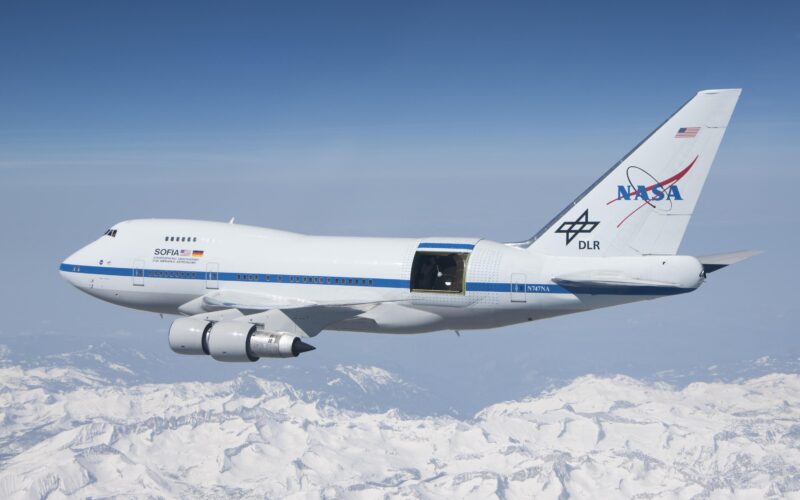NASA’s retired 747SP SOFIA makes final flight to Pima Air & Space Museum

NASA’s Stratospheric Observatory for Infrared Astronomy (SOFIA) aircraft has been retired to the Pima Air & Space Museum in Tucson, Arizona following the conclusion of its mission.
The Boeing 747SP ‘SOFIA’ jetliner, which was modified to carry a reflecting telescope, performed its final flight from NASA’s Armstrong Flight Research Center in Palmdale, California, to Tucson on December 13, 2022, NASA said in a statement.
The aircraft will eventually be on public display at Pima Air & Space Museum, the statement added.
“The SOFIA mission has a powerful potential to inspire, from its discoveries about the unknown in our universe, to the engineering achievements that broke new ground, to the international cooperation that made it all possible,” said Paul Hertz, senior advisor for the Science Mission Directorate at NASA.
While NASA’s Boeing 747SP has been retired, Hertz said that SOFIA will continue to engage a diverse new generation of scientists, engineers, and explorers.
A successful eight-year run
Initial development of the SOFIA aircraft began in 1996, with the jet reaching full operational capability in 2014.
Since 2014, SOFIA completed a five-year primary mission in 2019 and concluded a three-year mission extension in 2022, NASA noted in a statement released in April 2022.
The SOFIA jetliner was equipped with a large door in the fuselage that remained open while the aircraft was in flight. During flight, the reflecting telescope would observe infrared light from the Moon, planets, stars, star-forming regions, and nearby galaxies.
An evaluation made by the National Academies’ Decadal Survey on Astronomy and Astrophysics 2020 report concluded that SOFIA’s science productivity did not justify its operating costs. The report found that SOFIA’s capabilities did not significantly overlap with the science priorities that had been identified by the Decadal Survey for the next decade.
